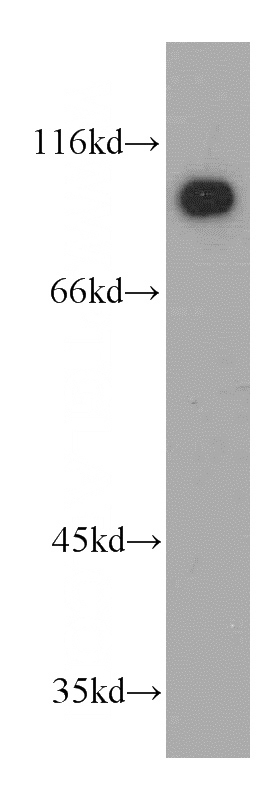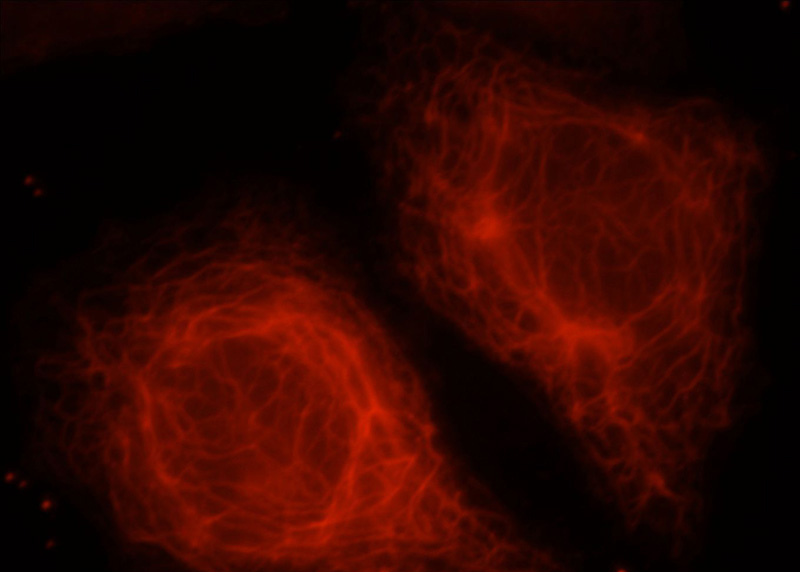-
Product Name
KANK2 antibody
- Documents
-
Description
KANK2 Rabbit Polyclonal antibody. Positive IF detected in HepG2 cells. Positive WB detected in mouse lung tissue, mouse heart tissue, mouse kidney tissue, Transfected HEK-293 cells. Observed molecular weight by Western-blot: 95kd
-
Tested applications
ELISA, WB, IF
-
Species reactivity
Human,Mouse,Rat; other species not tested.
-
Alternative names
ANKRD25 antibody; DKFZp434N161 antibody; FLJ20004 antibody; KANK2 antibody; KIAA1518 antibody; MXRA3 antibody; SIP antibody; SRC 1 interacting protein antibody; SRC1 interacting protein antibody
-
Isotype
Rabbit IgG
-
Preparation
This antibody was obtained by immunization of KANK2 recombinant protein (Accession Number: NM_001379563). Purification method: Antigen affinity purified.
-
Clonality
Polyclonal
-
Formulation
PBS with 0.02% sodium azide and 50% glycerol pH 7.3.
-
Storage instructions
Store at -20℃. DO NOT ALIQUOT
-
Applications
Recommended Dilution:
WB: 1:500-1:5000
IF: 1:10-1:100
-
Validations

mouse lung tissue were subjected to SDS PAGE followed by western blot with Catalog No:111909(KANK2 antibody) at dilution of 1:800

Immunofluorescent analysis of HepG2 cells, using KANK2 antibody Catalog No:111909 at 1:25 dilution and Rhodamine-labeled goat anti-rabbit IgG (red).
-
Background
Involved in transcription regulation by sequestering nuclear receptor coactivators, such as NCOA1, NCOA2 and NCOA3, in the cytoplasm; the function is deregulated by phosphorylation. May be involved in the control of cytoskeleton formation by regulating actin polymerization. Involved in regulation of caspase-independent apoptosis; proposed to sequester AIFM1 in mitochondria and apoptotic stimuli lead to its proteasomal degradation allowing the release of AIFM1 to the nucleus. May be involved in promotion of cell proliferation.
-
References
- Yasuda K, Zhang H, Loiselle D, Haystead T, Macara IG, Mili S. The RNA-binding protein Fus directs translation of localized mRNAs in APC-RNP granules. The Journal of cell biology. 203(5):737-46. 2013.
Related Products / Services
Please note: All products are "FOR RESEARCH USE ONLY AND ARE NOT INTENDED FOR DIAGNOSTIC OR THERAPEUTIC USE"
